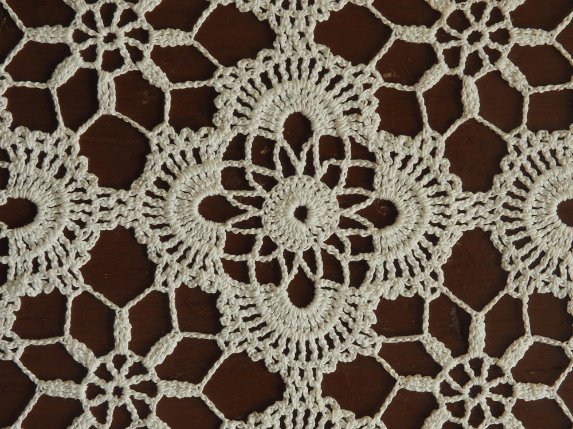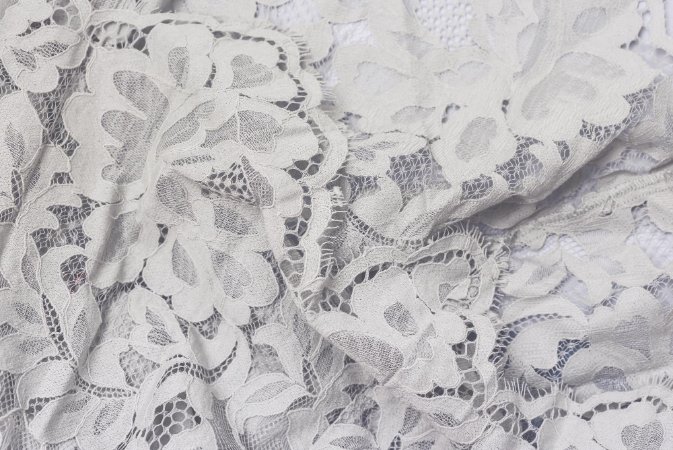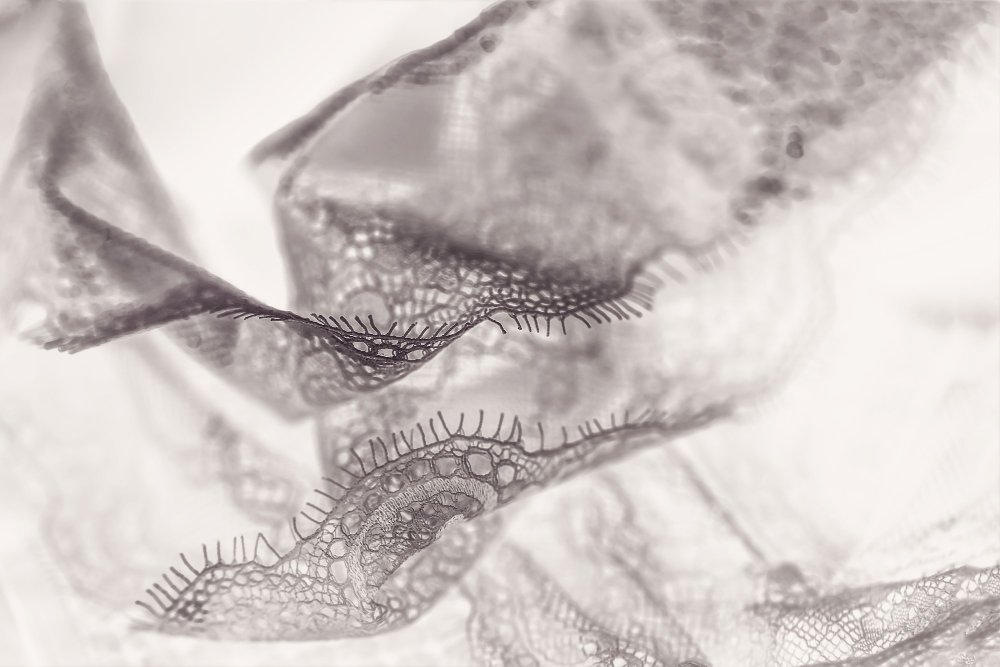Master the art of Schiffli embroidery with our comprehensive guide covering everything from machine techniques to care instructions and current fashion trends.
Table of Contents
What is Schiffli Lace?
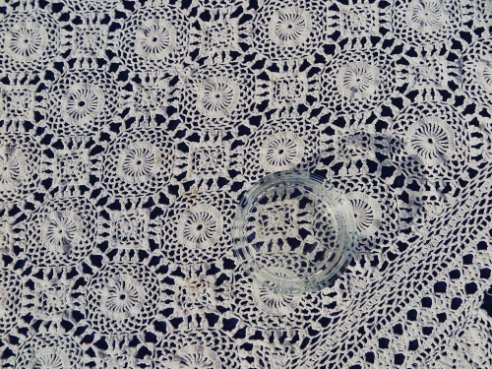
Important Clarification: Schiffli is an embroidery technique, not a specific type of fabric. When people say “Schiffli lace” or “Schiffli fabric,” they’re referring to fabrics created using the Schiffli embroidery method.
Schiffli (pronounced SHIF-lee) is a specialized machine embroidery technique that creates intricate lace-like fabrics using advanced machinery. The name comes from the Swiss-German word meaning “little boat,” inspired by the shuttle’s smooth, nautical motion in the original machines invented in 1863.
Think of it this way: just as “baking” is a technique that produces different types of bread, “Schiffli” is an embroidery technique that produces various types of lace fabrics depending on the base material and design pattern used.
What Kind of Fabric is Schiffli?
To be clear: There is no single “Schiffli fabric.” Instead, the Schiffli technique creates fabrics on multiple base materials, resulting in different types of lace fabrics:
- Cotton Schiffli Lace – Most common, breathable and comfortable
- Silk Schiffli Lace – Luxury option with natural sheen
- Polyester Schiffli Lace – Durable and affordable
- Organza Schiffli Lace – Sheer and elegant
- Georgette Schiffli Lace – Flowing drape with texture
The technique is particularly popular for creating chemical lace, where the base fabric dissolves away, leaving only the embroidered pattern.
History and Evolution of Schiffli Embroidery
In 1863, Swiss inventor Isaak Gröbli revolutionized textile production with his mechanical embroidery machine. This breakthrough replaced weeks of painstaking handwork with synchronized needles that could produce complex designs in hours.
Year Schiffli machine invented
World’s embroidery from St. Gall by 1910
Schiffli machines in Switzerland by 1910
From Hand to Machine Innovation
Before Gröbli’s invention, creating intricate patterns required months of meticulous hand embroidery. The Schiffli machine changed everything by combining mechanical efficiency with artisanal quality. By the 1880s, factories in Switzerland’s St. Gall region adopted these devices, transforming local workshops into global textile leaders.
The early 20th century marked a golden age for Schiffli embroidery. Though World War I disrupted trade, the industry adapted by diversifying into fashion and home decor. Today, this technology remains foundational to modern embroidered lace production.
How Schiffli Fabric is Made
Digitizing for Schiffli: Introduction to Schiffli embroidery and intricate design creation
Schiffli Production Process
The Chemical Lace Method
The most distinctive Schiffli technique involves embroidering patterns onto temporary base fabric. After completion, the material undergoes chemical baths that dissolve the foundation while preserving intricate designs. Modern methods use water-soluble fabrics or heat-sensitive materials to reduce environmental impact.
| Method | Base Material | Dissolution Process | Max Width/Length | Environmental Impact |
|---|---|---|---|---|
| Traditional | Chemically treated cotton | Acid baths | 40″ x 10 yards | Higher chemical waste |
| Modern | Water-soluble polymer | Hot water immersion | 60″ x 15 yards | Eco-friendly |
| Heat-sensitive | Thermoplastic synthetic | Controlled temperature | Custom dimensions | Low waste |
Machine Specifications and Technology
Modern Schiffli machines are technological marvels that deploy up to 1,000+ needles working in perfect synchronization. Each needle coordinates with a bobbin that loops thread through the base cloth, creating interlocking stitches without manual intervention.
Technical Specifications:
- Machine Length: 15-18 meters
- Needle Count: 600-1,000+ needles
- Minimum Stitch Length: 1/256 inch (Saurer machines)
- Production Speed: Up to 1,200 stitches per minute
- Embroidery Field: Continuous overlapping capability
What is the Difference Between Schiffli and Regular Embroidery?
Understanding this difference helps clarify why Schiffli is called a “technique” rather than a “fabric type”:
- Regular embroidery decorates existing permanent fabrics with thread patterns
- Schiffli embroidery technique creates the fabric structure itself by embroidering on dissolvable materials
- End result: Regular embroidery produces decorated fabric; Schiffli technique produces lace fabric
- Scale: Schiffli involves industrial production; regular embroidery can be domestic or commercial
Remember: When someone asks “What is Schiffli fabric made of?” they’re actually asking about the materials used in fabrics created by the Schiffli technique – cotton, silk, polyester, etc.
Types and Variations of Schiffli Fabrics
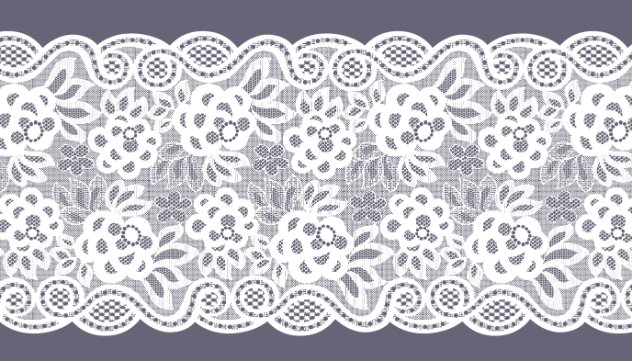
Schiffli techniques produce diverse fabric types, each with unique characteristics and applications.
Is Chemical Lace the Same as Schiffli Lace?
Not exactly. Here’s the relationship between these terms:
- Chemical lace is a specific type of lace fabric created using the Schiffli embroidery technique
- Schiffli technique can create chemical lace (where base dissolves) AND regular embroidered fabrics (where base remains)
- In simple terms: All chemical lace uses Schiffli technique, but not all Schiffli-made fabrics are chemical lace
Think of chemical lace as one type of product that can be made using the Schiffli embroidery method, just like chocolate cake is one type of dessert you can make using baking techniques.
Is Schiffli Fabric Good for Summer?
The correct way to ask this is: “Are fabrics made using the Schiffli technique good for summer?”
Answer: Yes! Schiffli-made cotton lace fabrics are excellent for summer wear because:
- Breathability: Open lace structure allows air circulation
- Lightweight: Minimal fabric weight keeps you cool
- Moisture-wicking: Cotton base naturally absorbs perspiration
- UV protection: Provides light coverage without overheating
Popular summer applications include cotton blouses, sundresses, and beachwear cover-ups made using the Schiffli embroidery method.
Cotton Schiffli-Made Lace
Breathable, durable, perfect for everyday wear and summer clothing
Silk Schiffli-Made Lace
Premium option with natural sheen, ideal for bridal wear and evening gowns
Organza Schiffli-Made Lace
Transparent elegance for layering and dramatic fashion statements
Chemical Lace (Schiffli-Made)
Freestanding patterns with no background fabric, ultimate delicacy
Is Schiffli Fabric Cotton?
This question shows the common confusion! Remember, Schiffli is a technique, not a fabric type. The question should be: “What materials can be used with the Schiffli technique?”
Fabrics created using Schiffli embroidery technique can be:
- Cotton-based (most popular for everyday wear)
- Silk-based (luxury applications)
- Polyester-based (affordable and durable)
- Mixed fiber blends
So when you see “cotton Schiffli lace” for sale, you’re buying lace fabric made using the Schiffli technique on a cotton base material.
Schiffli vs Other Lace Types: Complete Comparison
Understanding how the Schiffli technique compares to other lace-making methods helps in making informed fabric choices for your projects. Remember: we’re comparing production techniques, not fabric types.
| Lace-Making Technique | Production Method | Characteristics | Typical Uses | Cost Range |
|---|---|---|---|---|
| Schiffli Technique | Machine embroidery on dissolvable base | Intricate, consistent patterns | Fashion, bridal, home decor | $-$$ |
| Chantilly Technique | Hand or machine bobbin lace | Delicate floral motifs, scalloped edges | Bridal veils, evening wear | $$-$$ |
| Guipure Technique | Heavy machine embroidery, no net background | Raised patterns, substantial weight | Structured garments, accessories | $-$$ |
| Needle Lace Technique | Hand-stitched with needle and thread | Extremely delicate, unique patterns | Luxury items, historical reproductions | $$-$$$ |
| Raschel Technique | Knitted on Raschel machines | Stretchy, versatile patterns | Lingerie, sportswear, trim | $-$ |
How to Identify Schiffli-Made Lace:
- Fuzzy edges: Chemical dissolution leaves slightly fuzzy thread ends
- Consistent patterns: Machine precision creates uniform repeats
- Lock stitch construction: Front and back threads interlock (visible under magnification)
- No visible fabric threads: In chemical lace, only embroidery threads remain
Machine Technology and Leading Manufacturers
The Schiffli embroidery machine industry continues to evolve with cutting-edge technology from established manufacturers worldwide.
Leading Manufacturers
Saurer (Switzerland)
Original inventor’s company, still leading in precision technology
Lässer AG (Switzerland)
Premium machines known for durability and complex design capability
ZSK Stickmaschinen (Germany)
Advanced technology with cutting-edge automation features
Gunold (Germany)
Comprehensive solutions including threads, accessories, and machinery
Modern Machine Features
- Computer Control: Digital patterns replace punch cards
- Automatic Threading: Reduces setup time and labor costs
- Quality Monitoring: Real-time defect detection
- Energy Efficiency: Reduced power consumption vs. older models
- Multi-color Capability: Automatic thread changes for complex designs
2024-2025 Fashion Trends in Schiffli Fabrics
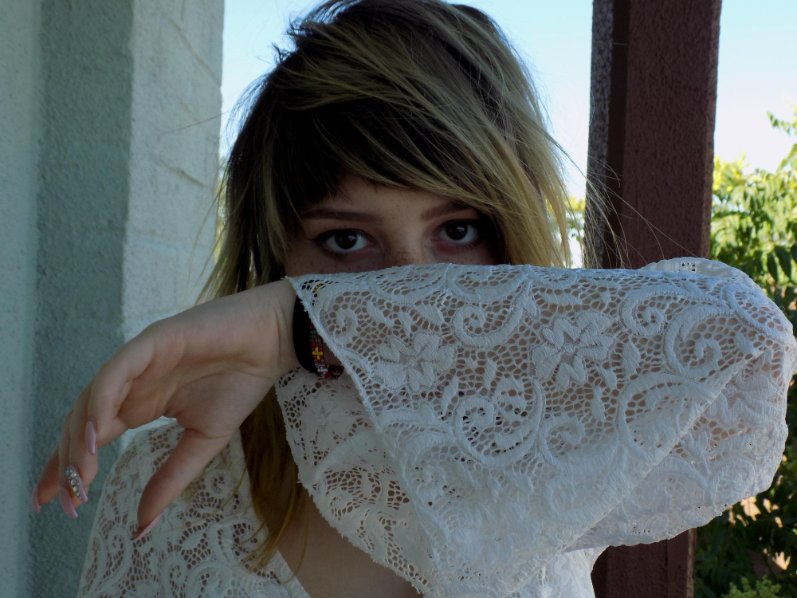
Current fashion runways showcase Schiffli lace in exciting new applications, blending traditional craftsmanship with contemporary aesthetics.
Is Schiffli in Fashion?
Absolutely! Schiffli embroidery is experiencing a major revival in 2024-2025, driven by several key trends:
Top 2024-2025 Schiffli Trends:
- Pastel Palettes: Soft mint green, lavender, and blush pink dominate collections
- Sustainable Options: Eco-friendly production using organic cotton and water-soluble bases
- Sheer Elegance: Transparent variations for strategic layering effects
- Oversized Motifs: Bold patterns spanning entire bodices
- 3D Elements: Floating floral clusters and geometric cutouts
- Vintage Revival: Classic patterns reimagined for modern silhouettes
Contemporary Applications
Modern designers use Schiffli techniques across diverse fashion categories:
- Bridal Fashion: Romantic veils and gown details with Alençon-inspired motifs
- Festival Wear: Metallic threads and abstract patterns for music festivals
- Ready-to-wear: Everyday blouses and summer dresses
- Home Decor: Elegant curtains, table linens, and pillowcases
- Accessories: Bags, scarves, and decorative trim
The technique’s versatility allows seamless transitions from cathedral-length wedding trains to chic summer tops, making it a designer favorite for 2025 fashion trends.
Care and Maintenance Guide
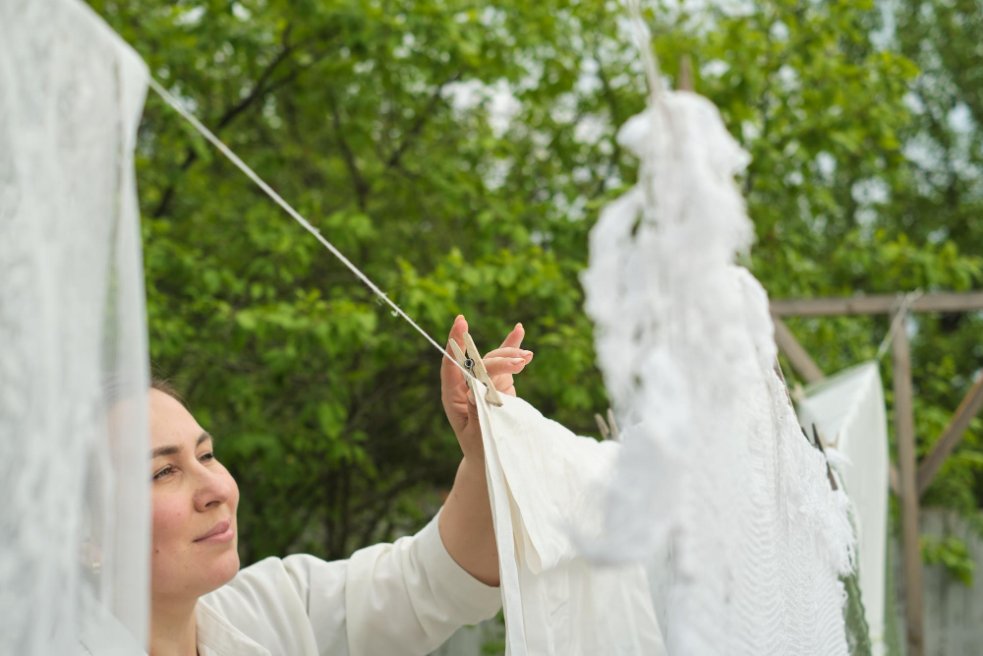
Proper care ensures your Schiffli fabrics maintain their beauty and last for years. The delicate nature of these textiles requires specific attention to washing, drying, and storage.
Washing
Hand wash in cold water or gentle machine cycle. Use color-safe detergent only.
Drying
Air dry only. Avoid direct sunlight and never use machine dryer.
Ironing
Light iron on low heat. Use pressing cloth to protect delicate threads.
Storage
Store flat or carefully folded. Avoid hangers that may stretch fabric.
Detailed Care Instructions by Fabric Type
| Fabric Base | Water Temperature | Detergent Type | Drying Method | Iron Setting |
|---|---|---|---|---|
| Cotton Schiffli | Cold (30°C) | Mild liquid detergent | Air dry, shade | Low heat with cloth |
| Silk Schiffli | Cold (20°C) | Silk-specific detergent | Flat dry, away from heat | Cool iron, reverse side |
| Polyester Schiffli | Warm (40°C) | Standard detergent | Air dry or low tumble | Medium heat |
| Chemical Lace | Cold (20°C) | Delicate detergent | Flat dry only | No direct iron |
Common Care Mistakes to Avoid:
- Never use bleach: Can damage embroidery threads and cause discoloration
- Avoid fabric softeners: Can coat delicate fibers and reduce breathability
- Don’t wring or twist: Can distort lace patterns and break threads
- Skip the dryer: High heat can shrink, damage, or melt synthetic components
Buying Guide and Cost Analysis

Understanding Schiffli fabric pricing and quality indicators helps you make informed purchasing decisions for your projects.
Cost Analysis by Quality Level
| Quality Level | Price Range (per yard) | Characteristics | Best For |
|---|---|---|---|
| Basic | $8-15 | Simple patterns, cotton/polyester blend | Casual wear, practice projects |
| Mid-range | $15-35 | Detailed designs, pure cotton or silk blend | Fashion garments, home decor |
| Premium | $35-60 | Complex patterns, luxury fibers | Bridal wear, haute couture |
| Luxury | $60-120+ | Hand-guided details, silk, metallic threads | Designer collections, special occasions |
What to Look for When Buying
Quality Indicators:
- Thread consistency: Even tension throughout the pattern
- Pattern clarity: Sharp, well-defined motifs without blurred edges
- Color fastness: Dyes that won’t run or fade
- Edge finishing: Clean, professionally finished selvages
- Weight and drape: Appropriate heft for intended use
Where to Buy Schiffli Fabrics
Schiffli fabrics are available through various channels, each with distinct advantages:
- Online Retailers: Widest selection, competitive prices, convenient comparison shopping
- Specialty Fabric Stores: Expert advice, ability to feel texture before purchase
- Wholesale Markets: Best prices for bulk purchases, popular in Gujarat’s textile hubs
- Designer Suppliers: Exclusive patterns, highest quality options
Many retailers offer free swatch services, allowing you to evaluate quality and color matching before committing to larger purchases. This is particularly valuable when working on fabric selection for important projects.
Industry Market Insights
The global Schiffli embroidery machine market reflects the technique’s growing importance in modern textile production.
Market size in 2024
Projected size by 2033
Annual growth rate (CAGR)
Asia-Pacific market share
Regional Production Centers
Schiffli production concentrates in several key regions:
- India (Gujarat): Major exporter, competitive pricing, diverse patterns
- China: Largest global production volume, technology innovation
- Switzerland: Premium quality, traditional craftsmanship heritage
- Germany: Advanced machinery, precision engineering
Sustainability Trends
Environmental consciousness drives industry innovation toward eco-friendly practices:
- Water-soluble bases: Eliminate chemical waste from dissolution processes
- Organic cotton threads: Sustainable raw materials for health-conscious consumers
- Energy-efficient machines: Reduced power consumption in production
- Recycled polyester options: Circular economy integration
These trends align with broader sustainable textile movements and consumer demand for environmentally responsible fashion.
Frequently Asked Questions
Common synonyms include “Swiss embroidery technique,” “chemical lace method,” “machine embroidery lace technique,” and “shuttle embroidery.” In German-speaking regions, it’s also called “Ätzspitze” (etched lace technique).
This question contains a common misunderstanding. Schiffli is an embroidery technique, not a fabric type. Fabrics created using the Schiffli technique can be made on various base materials. Cotton is the most popular choice due to its breathability and durability, but silk, polyester, and organza bases are also common.
Schiffli is pronounced “SHIF-lee” with emphasis on the first syllable. The ‘sch’ sounds like ‘sh’ in English, and the double ‘f’ creates a slight pause.
Schiffli comes from Swiss-German meaning “little boat,” referring to the boat-shaped shuttle that carries the bobbin thread in the original embroidery machines invented by Isaak Gröbli.
Yes, but only on gentle cycles with cold water and mild detergent. Hand washing is preferred for delicate pieces. Always air dry and avoid fabric softeners.
Schiffli is a production technique, not a type of lace. The Schiffli technique uses machine embroidery on dissolvable bases to create intricate patterns, while traditional lace-making techniques like Cluny or Valenciennes use different methods like bobbin weaving or needle work.
For sewing projects, yes. Schiffli fabrics are relatively easy to work with, though they require careful handling. Start with basic sewing techniques and use appropriate presser feet designed for delicate fabrics.
With proper care, high-quality Schiffli fabrics can last decades. The key is gentle washing, proper storage, and avoiding excessive stretching or snagging.
Conclusion
Schiffli embroidery represents one of textile history’s most successful marriages of traditional artistry with industrial innovation. From Isaak Gröbli’s revolutionary 1863 invention to today’s computer-controlled precision machines, this technique continues to evolve while maintaining its core appeal of intricate beauty and consistent quality.
Key Takeaways:
- Technique, Not Fabric: Schiffli is an embroidery method that creates various lace types on different base materials
- Versatile Applications: From bridal gowns to summer tops, home decor to high fashion accessories
- Quality Indicators: Look for consistent thread tension, sharp pattern definition, and proper edge finishing
- Care Requirements: Cold water washing, air drying, and gentle handling ensure longevity
- Market Growth: Industry expanding at 5.2% annually, driven by sustainability and fashion innovation
- Cost Range: $8-120+ per yard depending on complexity, materials, and design intricacy
Recommendations for Different Users
Fashion Designers
Experiment with 3D elements and sustainable options. Consider oversized motifs for 2025 trend alignment.
Home Sewers
Start with cotton Schiffli for summer projects. Use appropriate machine stitches and pressing techniques.
Bridal Market
Invest in premium silk Schiffli with corded details. Layer with tulle for dramatic effects.
Textile Students
Study the chemical dissolution process and compare with traditional embroidery techniques.
The future of Schiffli embroidery looks bright, with technological advances enabling more complex designs while environmental considerations drive sustainable production methods. Whether you’re creating a once-in-a-lifetime wedding gown or adding elegant details to everyday garments, understanding Schiffli techniques empowers better fabric choices and care practices.
As fashion continues embracing both heritage techniques and modern innovation, Schiffli embroidery stands as proof that true craftsmanship transcends time. Its ability to adapt while preserving core artistry ensures this remarkable technique will continue enchanting designers and consumers for generations to come.
For those ready to explore Schiffli fabrics in their next project, remember that quality investment pays long-term dividends. Choose appropriate base materials for your climate and intended use, follow proper care instructions, and don’t hesitate to experiment with this versatile and beautiful textile art form.

